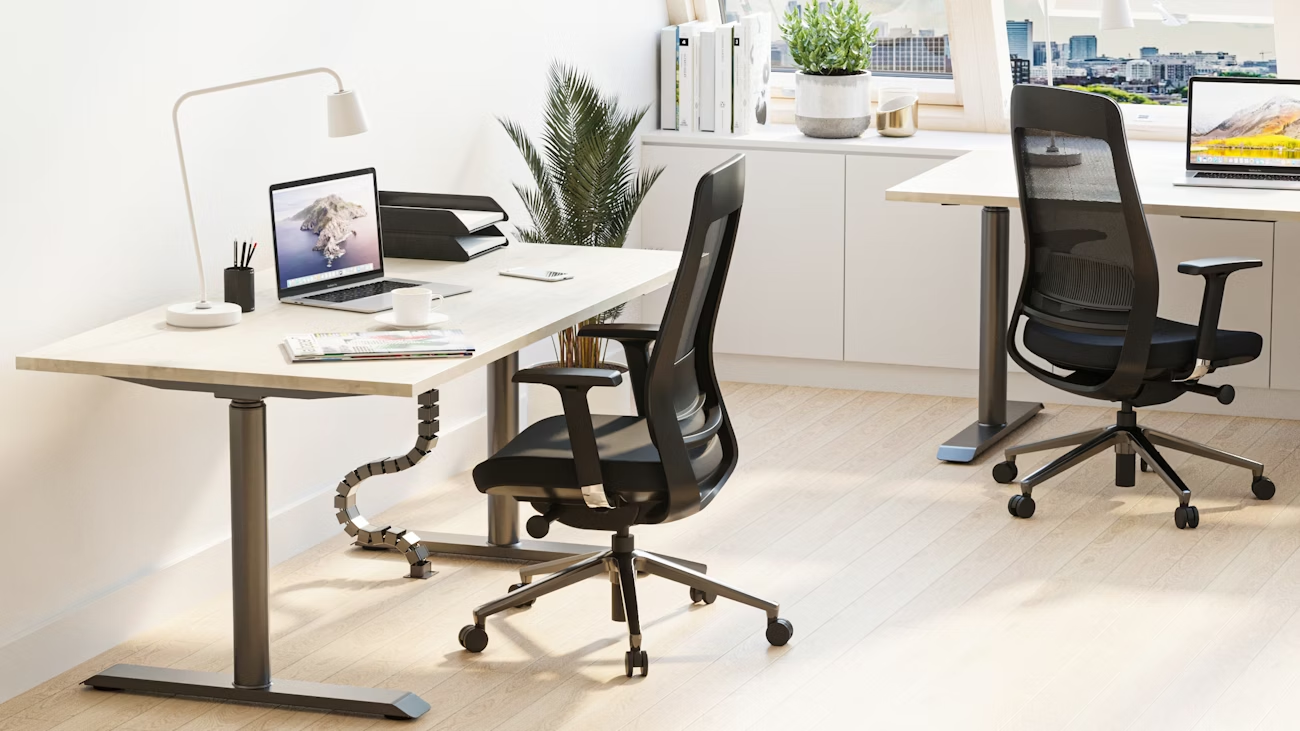When it comes to office furniture, especially office chairs, adjustability is key to ensuring comfort and productivity for all employees. An adjustable chair not only enhances ergonomics but also accommodates the diverse needs of different individuals within a workplace. Here’s a comprehensive guide to understanding and utilizing office chair adjustability to meet various employee requirements effectively.
Understand the Key Adjustability Features
To accommodate a wide range of needs, it’s important to understand the key adjustability features that an office chair should offer. These typically include seat height adjustment, backrest tilt, lumbar support adjustment, armrest height and width adjustment, and seat depth adjustment. Each feature plays a specific role in enhancing comfort and supporting good posture.
Seat Height Adjustment
Seat height adjustment allows employees to set their chair at a height that ensures their feet are flat on the floor, with their knees at a 90-degree angle. This adjustment is crucial for maintaining proper posture and reducing strain on the lower back and legs. Ensure that your office chairs have a pneumatic lever or similar mechanism for smooth and easy seat height adjustments.
Backrest Tilt and Recline
The backrest tilt and recline features enable employees to adjust the angle of the backrest to support their natural spine curve. This can help alleviate pressure on the lower back and promote a more relaxed seating position. Look for chairs with a tilt tension control that allows users to lock the backrest at various angles and adjust the resistance based on their preference.
Lumbar Support Adjustment
Adjustable lumbar support is essential for providing targeted lower back support. A chair with adjustable lumbar support can be positioned to fit the curve of each individual’s lower back, helping to prevent back pain and discomfort. Some chairs offer adjustable height and depth for lumbar support, providing customizable support for different body types.
Armrest Height and Width Adjustment
Adjustable armrests help reduce strain on the shoulders and arms by allowing users to position them at the correct height and width. Properly adjusted armrests support the arms in a relaxed position and can help alleviate tension in the shoulders and neck. Ensure your office chairs have armrests that can be adjusted in both height and width to accommodate various preferences and needs.
Seat Depth Adjustment
Seat depth adjustment allows users to modify the distance between the back of the chair and the edge of the seat. This feature helps accommodate different leg lengths and ensures that the user is sitting comfortably without pressure on the back of the knees. A well-adjusted seat depth promotes better circulation and overall comfort.
Tailor Adjustments to Specific Needs
Different employees have different needs based on their body types, work tasks, and personal preferences. By tailoring chair adjustments, you can create a more inclusive and comfortable work environment.
For Taller Employees
Taller employees may require a chair with a higher seat height range and a greater backrest height. Ensure that the office chairs you provide can accommodate taller individuals with sufficient seat height adjustment and a backrest that extends high enough to support the upper back and shoulders.
For Shorter Employees
Shorter employees may need a chair with a lower seat height range to ensure their feet are flat on the floor. Additionally, a chair with a smaller seat depth and adjustable lumbar support can help shorter individuals achieve proper posture and comfort.
For Employees with Back Issues
Employees with back issues may benefit from chairs with advanced lumbar support adjustments and a flexible backrest that promotes a range of motion. Look for chairs that offer adjustable lumbar height and depth, as well as options for tilting the backrest to reduce pressure on the spine.
For Users with Frequent Movement
For employees who frequently move around their workspace, a chair with smooth-rolling casters and a swivel feature is essential. Adjustable armrests and seat height will also help accommodate varying tasks and ensure that users can transition between different work areas comfortably.
Provide Training on Adjustments
Even the most adjustable chair will not benefit employees if they are not properly trained on how to use its features. Provide training or resources to help employees understand how to adjust their chairs correctly for optimal comfort and support. This can include instructional guides, videos, or hands-on demonstrations during onboarding.
Regular Maintenance and Updates
Regular maintenance of office chairs ensures that all adjustable features continue to function properly. Periodically check and service the chairs to address any issues with adjustment mechanisms. Additionally, stay informed about advancements in office furniture technology to consider upgrades that offer improved adjustability and ergonomic benefits.
Incorporate Feedback and Personalization
Encourage employees to provide feedback on their chair’s adjustability and comfort. Personal preferences and ergonomic needs can vary widely, so gathering input allows you to make informed decisions about chair adjustments and potential replacements. Offering options for personalized adjustments can greatly enhance employee satisfaction and productivity.
By focusing on these aspects of office chair adjustability, you can create a more comfortable and adaptable work environment that meets the diverse needs of your employees. Properly adjusted office furniture contributes to better posture, reduced discomfort, and overall improved workplace efficiency.








